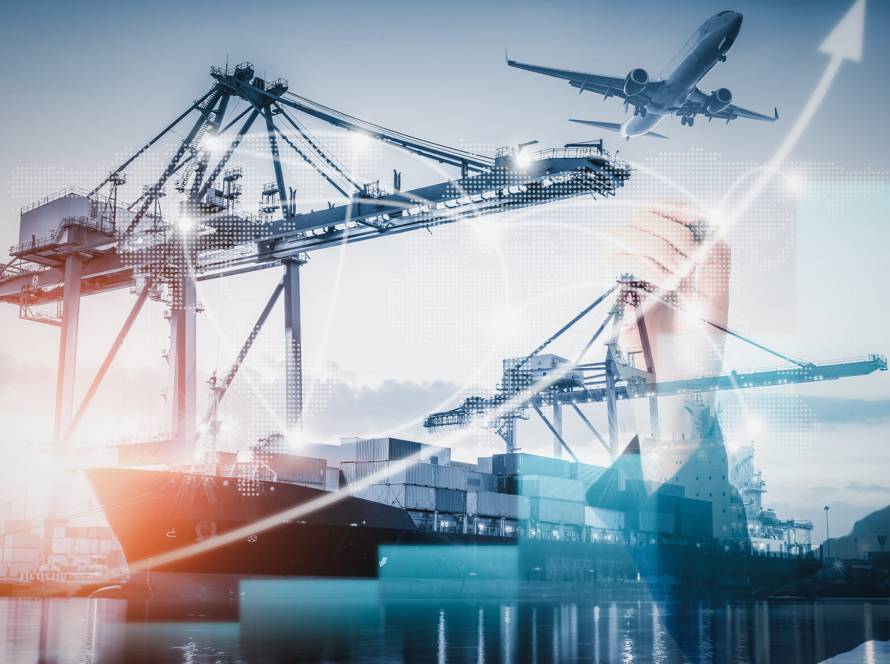In the digital age, e-commerce has reshaped consumer behavior and business operations across the globe. With the rise of online shopping, logistics has become a crucial pillar in ensuring that products move swiftly and efficiently from warehouses to customers’ doorsteps. As e-commerce continues to thrive, it presents both opportunities and challenges for the logistics industry. In this article, we’ll explore the significant impact e-commerce has had on logistics and how the industry is adapting to meet these evolving demands.
The E-commerce Boom and Its Demands
The growth of e-commerce has been exponential, with global online retail sales expected to hit $6.4 trillion by 2024. This surge in online shopping has dramatically increased the volume of goods needing transportation and delivery. Unlike traditional retail, where large quantities of goods are shipped to a limited number of stores, e-commerce demands the delivery of smaller, individualized packages to a wide range of destinations.
This shift in demand has forced logistics companies to rethink their processes. Warehouses must be able to handle more frequent orders, smaller inventory quantities, and faster delivery speeds. Consumers expect convenience, which means companies must ensure that products are in stock and can be delivered quickly—often within a day or two.
Last-Mile Delivery: The Final Frontier
One of the most significant logistical challenges that e-commerce has introduced is last-mile delivery—the final step in the delivery process from the transportation hub to the customer. It’s often the most costly and complex part of the supply chain. Last-mile delivery not only requires precise logistics but must also accommodate customers who expect fast, free, and flexible shipping options.
To solve this, many logistics companies are investing in technologies and infrastructure to streamline last-mile delivery. Strategies like urban fulfillment centers, drone deliveries, and autonomous vehicles are being explored to cut costs and increase delivery speed. Furthermore, innovative approaches like locker systems and curbside pickups are gaining traction to meet customer expectations while managing delivery costs.
Reverse Logistics: Handling Returns
Another unique aspect of e-commerce is reverse logistics, or handling product returns. Online shopping leads to significantly higher return rates compared to in-store purchases. In fashion, for example, customers often buy multiple sizes or colors of a product, intending to return what doesn’t fit or match their expectations.
Managing these returns is costly and complex for logistics providers, as returned goods must be inspected, repackaged, and restocked or disposed of. Companies are investing in systems to streamline returns processing, offering prepaid return labels, drop-off locations, and partnerships with third-party logistics providers (3PLs) to manage reverse logistics more efficiently.
Warehousing and Inventory Management
The logistics of warehousing has been fundamentally altered by e-commerce. In the past, warehouses were designed to store large quantities of goods that were shipped infrequently to retail outlets. Now, they must cater to smaller, more frequent orders. This shift has led to the rise of omnichannel fulfillment—where companies use the same warehouse to fulfill both online and in-store orders.
To meet these new demands, warehouses are embracing automation and technology. Robotic pickers, automated conveyor belts, and sophisticated inventory management software allow for faster processing of orders. Additionally, the proximity of warehouses to urban centers has become critical. Many e-commerce businesses are moving towards a decentralized network of smaller distribution centers located closer to customers, shortening delivery times and reducing transportation costs.
Sustainability and the Environmental Impact
With the surge in e-commerce and logistics activity, there has also been a rise in environmental concerns. The need for more deliveries means more vehicles on the road, contributing to traffic congestion and increased carbon emissions. Additionally, packaging waste from e-commerce orders, especially single-use plastics, poses environmental challenges.
To address this, many logistics and e-commerce companies are exploring sustainable solutions. Electric delivery vehicles, improved route optimization software, and green packaging alternatives are becoming more common. Some companies are also experimenting with carbon-neutral shipping options, allowing consumers to offset the environmental impact of their deliveries.
The Role of Technology in E-commerce Logistics
The digital transformation of logistics has been accelerated by e-commerce. Technologies like artificial intelligence (AI), machine learning (ML), and the Internet of Things (IoT) are playing critical roles in optimizing operations. For instance, AI-driven route optimization helps reduce delivery times and costs, while predictive analytics allow companies to better forecast demand and manage inventory levels.
Blockchain technology is also being explored as a means to increase transparency and traceability in the supply chain. By providing real-time data on the status and location of goods, blockchain can improve customer satisfaction and reduce the risk of fraud or delays.
The Future of E-commerce Logistics
Looking ahead, the e-commerce landscape will continue to evolve, bringing new challenges and opportunities for the logistics industry. We can expect to see greater investment in automation, the expansion of same-day delivery services, and the continued rise of green logistics solutions. Additionally, as technologies like autonomous delivery vehicles and drones become more widespread, the speed and efficiency of deliveries will increase.
Ultimately, logistics will remain at the heart of the e-commerce revolution. Companies that adapt to these changes, embrace innovation, and focus on creating seamless, efficient supply chains will be well-positioned to succeed in this fast-growing industry.
Conclusion
The rise of e-commerce has revolutionized the logistics industry, creating new challenges in last-mile delivery, warehousing, and sustainability. By adopting innovative technologies and rethinking traditional supply chain models, logistics companies are finding ways to meet the demands of the digital age. As e-commerce continues to grow, logistics will remain a key factor in its success.se venturing into the vast and unpredictable seas of global commerce.


